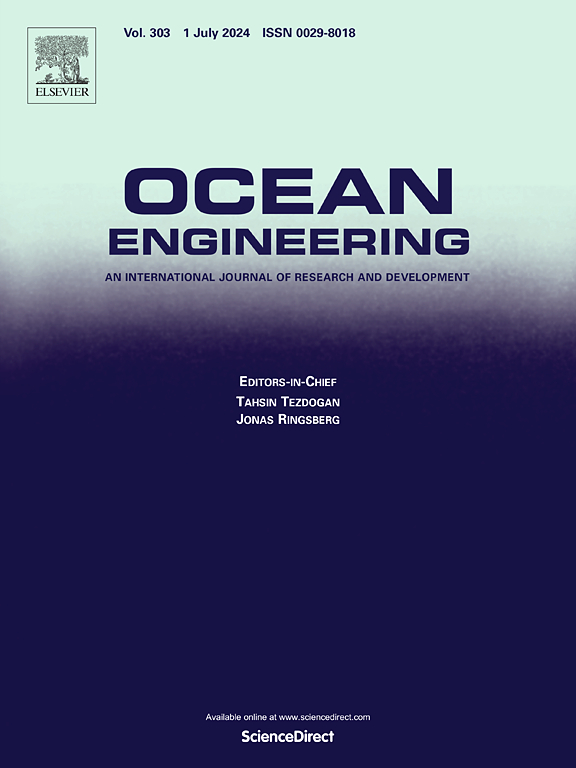Seakeeping analysis of an amphibious vessel using CFD-modified potential (CMP) simulation and experimental validation
IF 4.6
2区 工程技术
Q1 ENGINEERING, CIVIL
引用次数: 0
Abstract
This study introduces a hybrid simulation method, CFD-Modified Potential (CMP), that integrates Computational Fluid Dynamics (CFD) with potential flow methods to analyze the seakeeping performance of an amphibious vessel. The CMP procedure addresses the limitations of potential flow models, which are computationally efficient but neglect viscous effects, and CFD models, which are accurate but computationally intensive. By combining these approaches, CMP achieves both computational feasibility and enhanced accuracy. The method was used to predict roll and pitch damping ratios, derive Response Amplitude Operators (RAOs), and evaluate seakeeping performance. Results showed that CMP improved the accuracy of roll motion predictions in beam sea (90°) with errors below 5 % compared to experimental data. For pitch motion in head sea (120°–180°), significant improvements were observed when applying the CMP-derived damping ratio. Seakeeping performance predictions, particularly for roll motion, closely aligned with experimental results across all wave conditions, demonstrating CMP's reliability. While direct experimental data for pitch motion were unavailable, the method's robustness was validated through CFD-based comparisons. This study highlights CMP as a practical and reliable tool for accurate seakeeping performance assessments, minimizing the need for extensive experimental testing and supporting the design optimization of amphibious vessels.
求助全文
约1分钟内获得全文
求助全文
来源期刊

Ocean Engineering
工程技术-工程:大洋
CiteScore
7.30
自引率
34.00%
发文量
2379
审稿时长
8.1 months
期刊介绍:
Ocean Engineering provides a medium for the publication of original research and development work in the field of ocean engineering. Ocean Engineering seeks papers in the following topics.
 求助内容:
求助内容: 应助结果提醒方式:
应助结果提醒方式:


